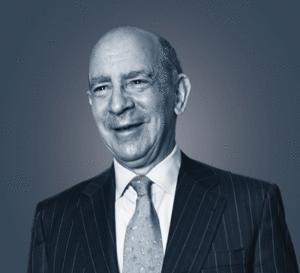The year 2022 started out peacefully enough. The 10-year U.S. Treasury bond yield was a borrower-friendly 1.6 percent, and most Americans, if asked, could not locate Ukraine on a map. Further, in the minds of many investors, high inflation was generally thought to be transitory.
But, seemingly overnight, the smooth sailing changed. The 10-year Treasury yield doubled within less than three months—a speed not seen before. Commercial real estate transactions, which had enjoyed a banner year in 2021 and the first quarter of 2022, suddenly hit a logjam.
The year became, in effect, the land of broken deals. Purchasers found that borrowing was at once more difficult and more expensive. Commercial mortgages, which had been reasonably available from institutional lenders, such as insurance companies and pension funds, in the 65 percent loan-to-value range, now tightened to the 55 to 60 percent range.
Sellers, whose offerings had in many cases been “priced to perfection,” found buyers unable or unwilling to complete and close their acquisitions as previously agreed to. The increase in “broken deals” was almost solely caused by the skyrocketing costs of both short- and long-term interest rates.
For grizzled veterans of commercial real estate, this return to a “negative leverage” environment may have been unforeseen but surely was not unique. Generally, at least for the past 15 years or so, interest rates were lower than capitalization rates caused in no small part by an accommodative Federal Reserve banking system. As a result, buyers were able to increase their equity yields by adding more leverage to acquisitions, so-called positive leverage.
The change from a positive-leverage environment to a negative-leverage one can dramatically reduce loan sizes.
For example, consider a $20 million purchase in January 2022 with a debt-service-coverage ratio of 1.25x and an interest rate of 3.5 percent, which requires equity of $5.15 million. By October 2022, with a 6 percent interest rate, negative leverage is in full effect. As a result, purchasing the same property at the same price requires equity of $8.9 million, a whopping 71 percent increase.
To virtually no one’s surprise, transaction volume collapsed, as did institutional lending volume. According to our proprietary Giliberto-Levy Commercial Mortgage Performance Index, institutional lending volume for June, July, and August 2022 was less than half the volume of the same period during the halcyon days of 2021. Perhaps even more surprising, the 2022 volume was 15 percent less than during summer 2020, which was the height of the COVID-19 lockdown.
Based on a continuation of high inflation, high short- and long-term rates, and restrictive leverage from institutional and bank lenders, here is our view of the road ahead:
1. We expect borrowers to suffer “sticker shock” both because interest rates are higher than those seen in quite a while and because leverage is lower. Assuredly, volume will take a hit. To manage the need for more equity, we expect more requests for preferred equity, mezzanine debt, and other forms of high-yield debt, which are senior to equity but junior to first mortgages.
2. There should be ample amounts of high-yield debt to manage the gap between equity and first mortgages. According to our proprietary commercial real estate high-yield debt index, the Giliberto-Levy 2 (G-L 2) high-yield debt performs quite well even under stressful economic conditions. For example, if the forthcoming recession were to resemble the Global Financial Crisis of 2008–2009, which showed a 30 percent decline in commercial real estate value, we would expect the G-L 2 Index to show a potential loss exposure of 9.7 percent. While no investor is happy with a loss, a loss of less than 10 percent is thought to be modest.
3. Some lenders will view this environment opportunistically while others will take a conservative approach. Now more than ever, transactions need multiple bids from lenders to determine the market.
4. Construction loans will continue to be in short supply until permanent loan rates show more stability.
JOHN B. LEVY is president of John B. Levy & Company Inc., a Richmond, Virginia–based real estate investment banking firm that raises equity and debt for commercial real estate owners and developers.


